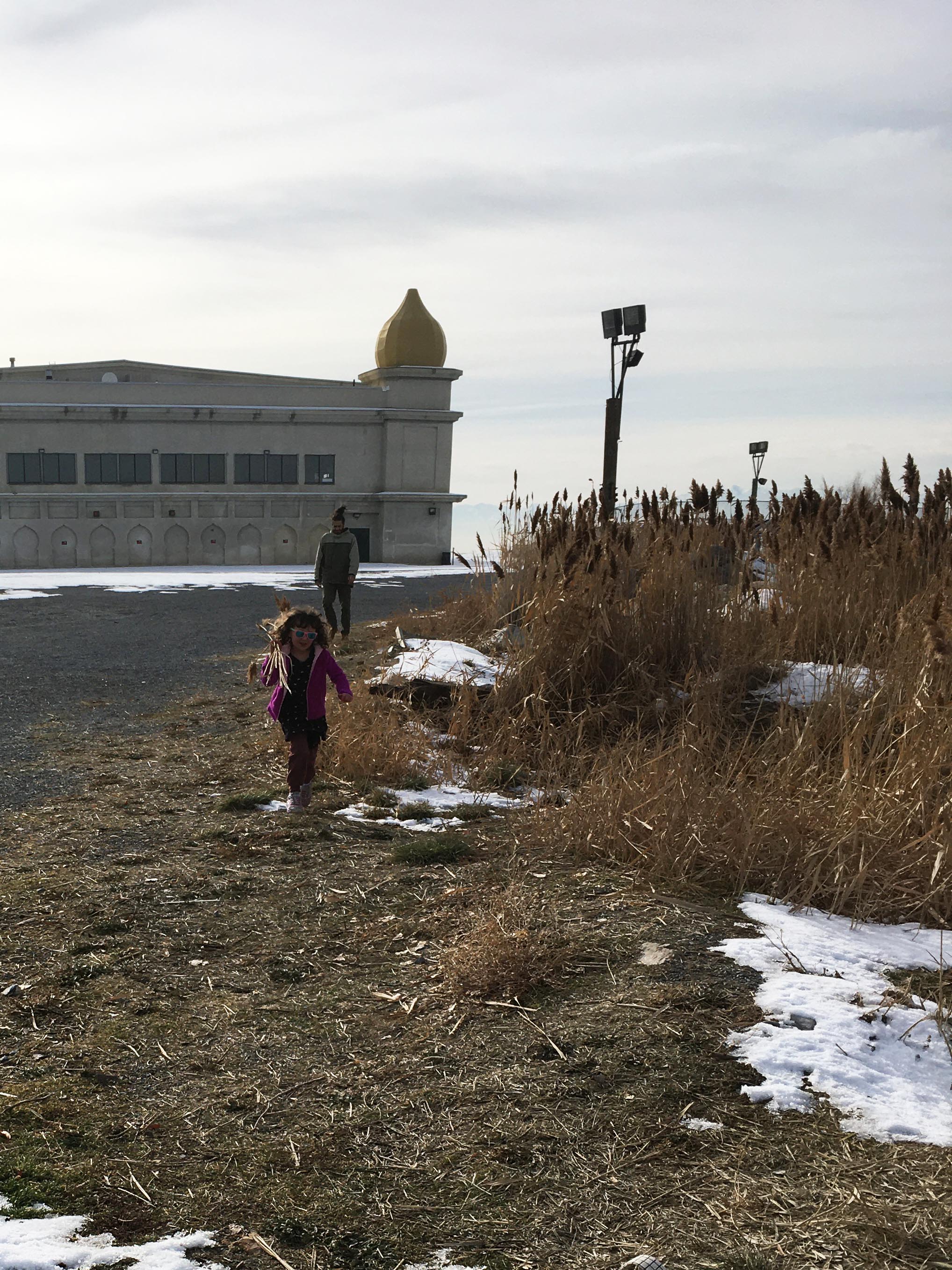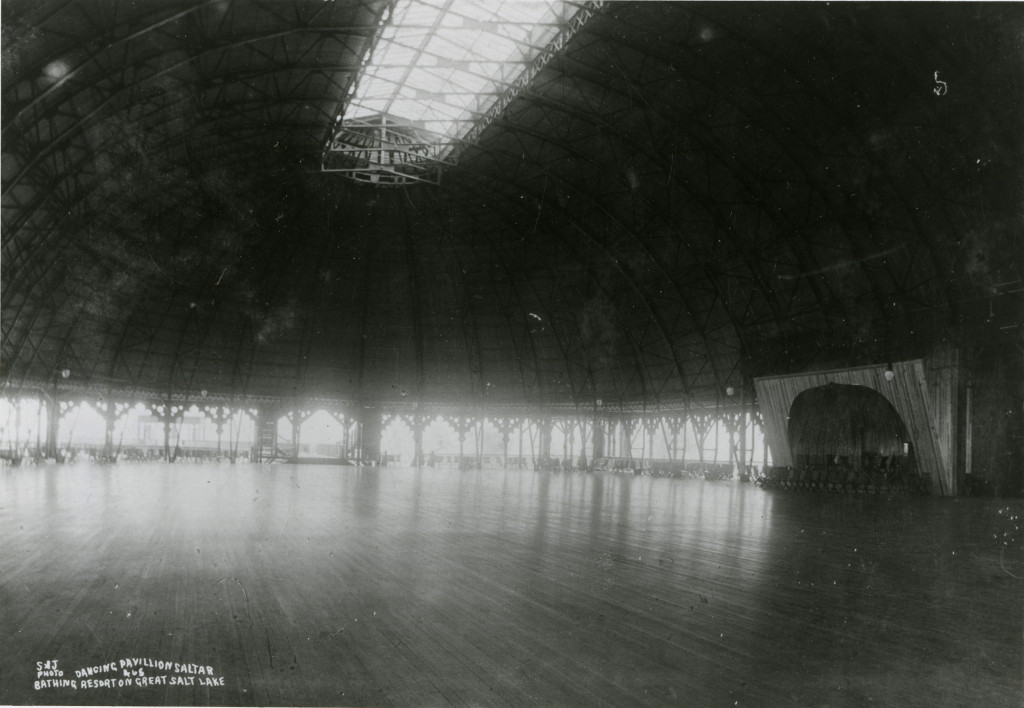Emily Tipps, Book Arts Faculty, J. Willard Marriott Library
The Fellowship in Collections Engagement in part of “Landscape, Land Art and the American West,” a joint initiative between the Utah Museum of Fine Arts and the J. Willard Marriott Library sponsored by the Andrew W. Mellon Foundation. This award fosters innovative, collections-based scholarship and creativity while highlighting the strengths of the UMFA’s and Marriott’s collections.
The goal of our project, Papermaking the Great Salt Lake, is to create a collaborative, site-specific installation of handmade paper sculpture at Great Salt Lake. Students in the spring 2020 papermaking course at the University of Utah contributed to the conceptualization, design, production, and implementation of the project. We are consulting resources from the J. Willard Marriott Library Special Collections and the collection of the Utah Museum of Fine Arts as source material and inspiration. The project is influenced by the Land art of artists like Nancy Holt and Robert Smithson but will be temporal and biodegradable—constructed primarily of materials sourced from the lake and its surrounding environs. Our process, while interrupted by the global pandemic, has offered research and collaboration opportunity to create art from a local landmark.
Our first steps were to learn more about the lake’s ecosystem and to secure permissions for responsibly collecting natural resources. We contacted Jaimi Butler, coordinator at Great Salt Lake Institute at Westminster College, and were thrilled when she offered to take us on a field trip. Departing from Great Salt Lake State Park, we walked along the lakeside discussing phenomena like microbialites, brine shrimp cysts, and oolitic sand, as well as halophytic plants like native pickleweed and invasive phragmites. In November 2019 we secured a permit from the Division of Forestry, Fire, and State Lands to collect phragmites, pickleweed, rabbit brush, tumbleweeds, and water from the lake.
We then collected a batch of phragmites to test as a papermaking fiber. This species’ rhizomatic growth and feathery seed heads help it dominate the lakefront in many areas. We were careful to leave the seed heads behind, so as not to contribute to the plant’s spread.

Throughout winter and spring, we compiled a list of resources held in the Marriott Library Special Collections, and learned search strategies to explore the UMFA’s collection. From the Museum, we sought holdings related to Land art, particularly Spiral Jetty (Robert Smithson’s iconic lakeside piece). Our focus in Special Collections was on GSL-related artists’ books and scientific texts, as well as historical primary-source documents like this photo from the interior of the old Saltair—a relic of the lake’s unique and intriguing social history:

Each student in the papermaking class researched a topic related to Great Salt Lake and shared their research and findings with the class. In this communal context, the scope of the project expanded. Students researched everything from the Lucin Cutoff and railroad ghost towns to changing lake levels and threatened species. We were all amazed by the diversity and complexity of life in and around the lake, and charmed by its striking sensory presence. With newfound knowledge about the site, the class began experimenting with paper sculpture processes. Using overbeaten abaca as our test fiber, each student crafted a model for a potential installation piece. As a group, we discussed the models’ conceptual implications and practical considerations and concluded that the final piece would take the form of stretched paper “panels” of overbeaten/translucent fiber with elements from the lake (salt, natural dyes, sand, and plant matter) laminated between the sheets or used on its surface. The piece will also include cubic paper forms dried around an armature representing salt crystals.
We planned to exhibit the finished collaborative work in the Marriott Library’s Katherine’s Courtyard to increase accessibility and test its durability before installing it at the lake. Our timeline aligned with the semester, with production scheduled April 10–28, and installation on April 29. However, as the project gained momentum, the onset of the COVID-19 pandemic and social distancing measures precluded completion as planned. Currently, although it is no longer a requirement of the class, students are invited and encouraged to participate in the project when group work is viable again. In the meantime, they are continuing their research of the lake and sharing results online.
Although our trajectory has necessarily shifted, the students remain engaged. Mary Jenkin writes, “I love the papermaking process and am intrigued with how the products from the lake would be transformed by such a thing…”
“…Taking materials and bringing them back in a new form only to be composted back into the environment is incredible.” – Mary Jenkin, papermaking student
Jem Aston says, “Collaborative artwork comes with the benefit of being inspired by a collective body of experience and ideas. Each artist presents their unique relationship to the subject, which makes it possible to create a fuller representation of subjects rife with complexities, like Great Salt Lake.” The energy and ingenuity of such students, combined with the exceptionality of Great Salt Lake and the magic of handmade paper are what have given and will continue to give Papermaking the Great Salt Lake life.
